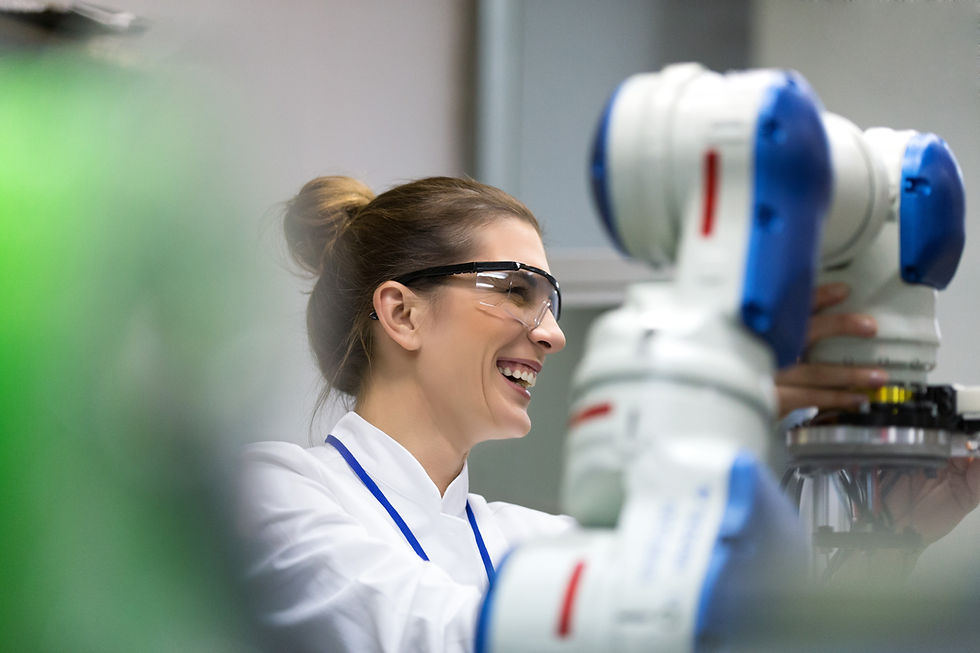Robotics in Construction Manufacturing: Wise Investment or Waste?
- Mario

- Jul 8, 2024
- 3 min read

The automotive industry has long been a pioneer in adopting robotics, revolutionizing its manufacturing processes. From the assembly line innovation by Henry Ford to the high-tech robotic arms seen in modern car factories, the auto industry provides a roadmap for integrating automation effectively. These advancements have resulted in unprecedented precision, efficiency, and cost savings. So, what lessons can the construction industry learn from this?
The Promise of Robotics in Construction
Efficiency and Precision
One of the most significant advantages of robotics in construction manufacturing is the unparalleled precision and efficiency they bring. Robots can perform tasks with a level of accuracy that far surpasses human capabilities. For instance, laying bricks, welding, and material handling can be done with a consistency that ensures higher quality and reduces waste. This precision not only speeds up the construction process but also cuts down on costs related to errors and rework.
Addressing Labor Shortages
The construction industry is grappling with a significant labor shortage. The aging workforce and a declining number of young workers entering the field have created a gap that is hard to fill. Robotics can step in to alleviate this issue by taking over repetitive, dangerous, or highly specialized tasks. This not only ensures that projects stay on schedule but also makes the industry safer for human workers.
Cost Savings in the Long Run
While the initial investment in robotics can be high, the long-term savings are substantial. Reduced labor costs, minimized errors, and increased productivity contribute to a quicker return on investment. Moreover, robots don’t need breaks, vacations, or sleep, enabling continuous production and faster project completion times.

The Challenges of Integrating Robotics
High Initial Costs
The upfront cost of purchasing and implementing robotic systems can be a significant barrier for many construction companies. Beyond the initial purchase, there are costs associated with training employees to operate and maintain these systems. Smaller firms, in particular, may find it challenging to justify this investment without clear, immediate returns.
Technological Integration
Integrating robotics into existing construction workflows can be complex. It requires not only the physical machinery but also the software and infrastructure to support it. Companies must ensure that their current systems are compatible with robotic technology and may need to upgrade or overhaul existing processes to fully benefit from automation.
Skill Gap
Operating advanced robotic systems requires a new set of skills. The current workforce may lack the necessary training and experience, necessitating a focus on upskilling and education. This shift demands time and resources, and companies must be prepared to invest in their employees to make the most of robotic technology.
Trullii Modular: Planning for a Robotic Future
At Trullii Modular, we are leading the way in integrating robotics into construction manufacturing. Our plan is not a speculative venture but a well-defined strategy, meticulously developed by a team of highly skilled engineering experts. We have a clear blueprint for our future factory, ensuring that every step is backed by robust planning and technical expertise.
Our investment in proprietary end-of-arm technology (EOAT) for modular construction is a key part of this strategy. This technology focuses on work holding, material handling, and positioning, allowing us to use fewer robots while performing various functions efficiently. Through extensive modeling and planning, we are set to leverage robotics to enhance precision, productivity, and overall quality in our modular units.
"Implementing full automation in our Trullii factory will set a new standard in the construction industry,” says Floran Lambie, Founder at Trullii Modular. “As the first of its kind in the world, our factory will demonstrate how cutting-edge robotics can deliver unparalleled efficiency, precision, and cost savings, transforming how modular homes are built."
By integrating robotics, we anticipate significant benefits in terms of increased precision and productivity. We aim to construct our modular units with consistent quality, reducing the time and cost associated with traditional building methods.
Wise Investment or Waste?
The debate over robotics in construction manufacturing boils down to perspective. For companies willing to invest in the future and adapt to new technologies, robotics offers immense potential. The benefits of increased efficiency, precision, and long-term cost savings make it a wise investment.
However, for those unprepared to navigate the initial costs and technological challenges, the investment may seem daunting. The key lies in a strategic approach—understanding the specific needs of your projects, evaluating the long-term benefits, and committing to the necessary training and integration processes.
While the path to robotic integration in construction manufacturing is not without its hurdles, the potential rewards make it a journey worth considering. At Trullii Modular, we believe in embracing innovation to build a smarter, more efficient future. Are you ready to join us in transforming the construction landscape?
Join the conversation! What are your thoughts on robotics in construction? Share your insights and experiences in the comments below. For more information on how Trullii Modular is leading the way with innovative construction solutions, visit our website.

